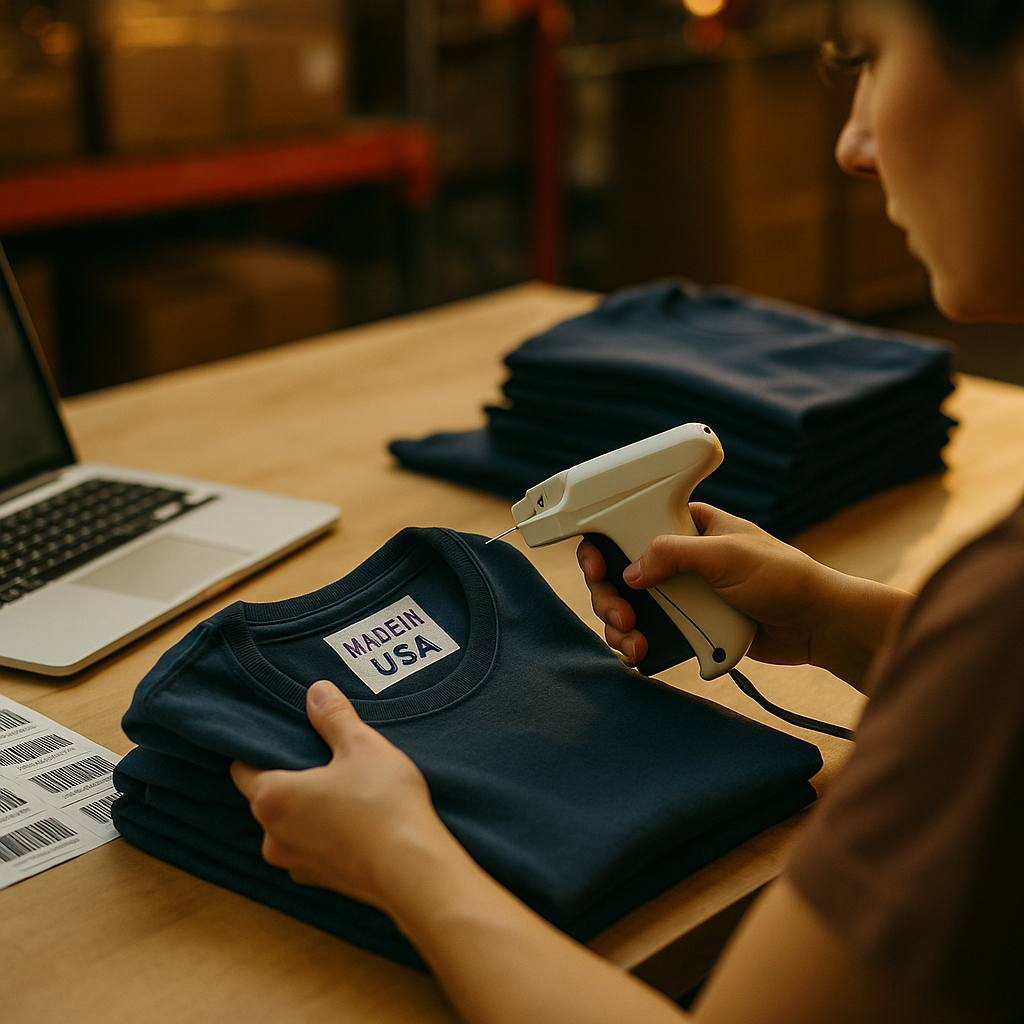The intricacies of “Made in” and country of origin labeling can make or break direct-to-consumer (D2C) brands in 2025. This guide dissects labeling requirements, compliance strategies, and customer trust factors to help your business stay ahead of regulations—and competitors. Whether you’re launching a new product or expanding globally, understanding these rules empowers high-integrity branding and confidence. Read on to avoid costly mistakes.
Understanding Country of Origin Labeling Requirements in 2025
Country of origin labeling indicates where a product was manufactured, assembled, or transformed. In 2025, governing bodies like the Federal Trade Commission (FTC) in the US and the European Commission in the EU hold D2C brands to strict standards to prevent misleading claims. Noncompliance can result in fines, import delays, and loss of consumer trust.
For D2C brands, the stakes are higher since online buyers rely on accurate product descriptions. Laws often require labels such as “Made in [Country]” to match the location of the product’s last substantial transformation, not merely where parts originated. Always refer to the most recent regulatory updates in the markets where you sell; rules can shift rapidly due to geopolitical or trade policy changes.
Compliance Strategies for Made in Labeling
Ensuring compliance starts with thorough supply chain auditing. D2C brands should:
- Map all production steps: Track your product journey, from raw materials to final assembly, to identify the correct country of origin.
- Document supplier information: Collect certifications and records from manufacturers, ensuring every claim is substantiated.
- Cross-check with regulations: Verify whether your product needs a simple “Made in” label or more detailed disclosures (e.g., “Made in USA from global components”).
Many D2C brands benefit from leveraging digital tools that automate documentation and flag changes in component sourcing. This proactive approach minimizes legal risk and delivers consistent transparency.
Global Differences in Country of Origin Rules
Country of origin guidelines differ globally, and failing to recognize these distinctions can impede market entry. For example:
- United States: The FTC requires that products labeled “Made in USA” are “all or virtually all” made domestically. Even minor overseas processing may disqualify your goods from this label.
- European Union: The EU’s customs code sees the origin as the last substantial, economically justified processing location. Dual-origin or “assembled in” statements must be precise.
- Asia-Pacific: Countries like Australia and China enforce their own definitions, including specific thresholds for local value-added.
If you operate cross-border, customize your product pages and packaging for each target region. Consider consulting legal counsel with expertise in country-specific labeling regulations for every market you serve.
The Business Value of Accurate “Made in” Claims
Transparent country of origin labeling builds trust—one of the most valuable assets for a D2C brand in 2025. According to a 2024 survey by Statista, 73% of global consumers consider “Made in” information important when making online purchases, especially for food, apparel, and electronics.
Legitimate claims can support premium pricing and enhance perceived quality. Conversely, misleading or unsubstantiated claims can trigger legal action, negative press, and irreversible brand damage. Displaying accurate labeling on your website—even before checkout—demonstrates respect for your buyers’ values and legal expectations. This transparency is not only about legal compliance, but also about nurturing customer loyalty and brand advocacy.
Innovative Tools and Best Practices for D2C Label Management
Efficiently managing country of origin data is easier than ever with modern tools:
- Product lifecycle management (PLM) systems: These automate traceability and labeling updates as components change or new suppliers are introduced.
- Blockchain solutions: Some D2C brands use blockchain to create tamper-proof audit trails, enhancing label credibility for customers.
- Platform integrations: Major ecommerce platforms now support customizable “Made in” attributes, ensuring consistency across marketplaces.
Implement robust training for your marketing teams: educate them on the legal ramifications of label misuse. Regularly review—at least quarterly—your labeling in light of any supply chain or regulatory changes.
Future Trends for Country of Origin Labeling
The landscape for D2C brands is evolving. As consumer demand for traceability and ethical sourcing grows, expect increased scrutiny from both regulators and buyers. In 2025, QR codes linking to detailed provenance information are trending, giving customers real-time access to manufacturing histories. Prepare for upcoming digital passport initiatives, especially in the EU, that could make product origin transparency not just best practice, but a technical requirement.
Staying ahead means building origin tracking into your D2C business from day one—never as an afterthought. Early investment in traceability can unlock marketing advantages, improve supplier relationships, and position your brand as a transparency leader.
Mastering “Made in” and country of origin labeling in 2025 ensures your D2C brand is both compliant and trusted. Prioritize transparent claims, keep pace with evolving regulations, and invest in tools that strengthen traceability—these steps are now vital for growth and credibility.
FAQs About Made in and Country of Origin Labeling for D2C Brands
-
What does “Made in” mean for D2C products?
“Made in” generally refers to where a product underwent its last substantial transformation. This means the location where the product gained its essential character, not just where it was assembled or packaged.
-
How do I determine my product’s country of origin?
Carefully review your product’s entire supply chain. The country of origin is usually the country where the last significant manufacturing process occurred, as defined by relevant laws in your selling regions.
-
What if my products use components from multiple countries?
Many regulations allow for terms such as “Made in USA with imported components” or “Assembled in [Country].” Always clarify and substantiate such claims; never assume a simple “Made in” label is sufficient.
-
Are there penalties for incorrect country of origin labeling?
Yes. Regulatory agencies can issue fines, order product recalls, or restrict imports. Noncompliance may also harm your brand’s reputation and undermine consumer trust.
-
Can technology help manage labeling compliance?
Absolutely. Modern D2C brands deploy product lifecycle management (PLM) systems, blockchain traceability, and ecommerce platform integrations to accurately track and update labeling data as their supply chains evolve.
